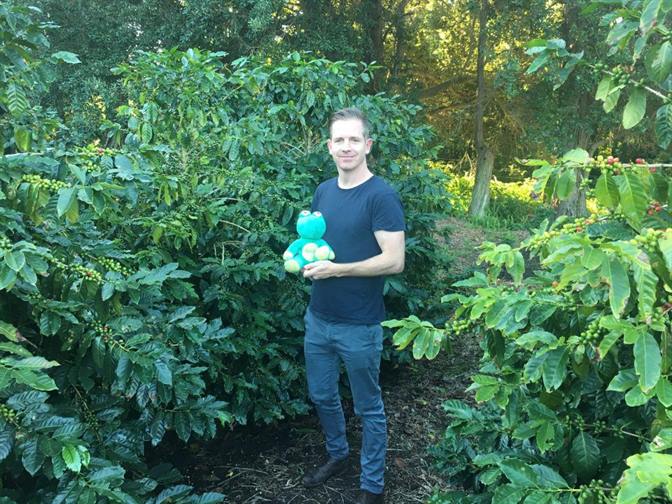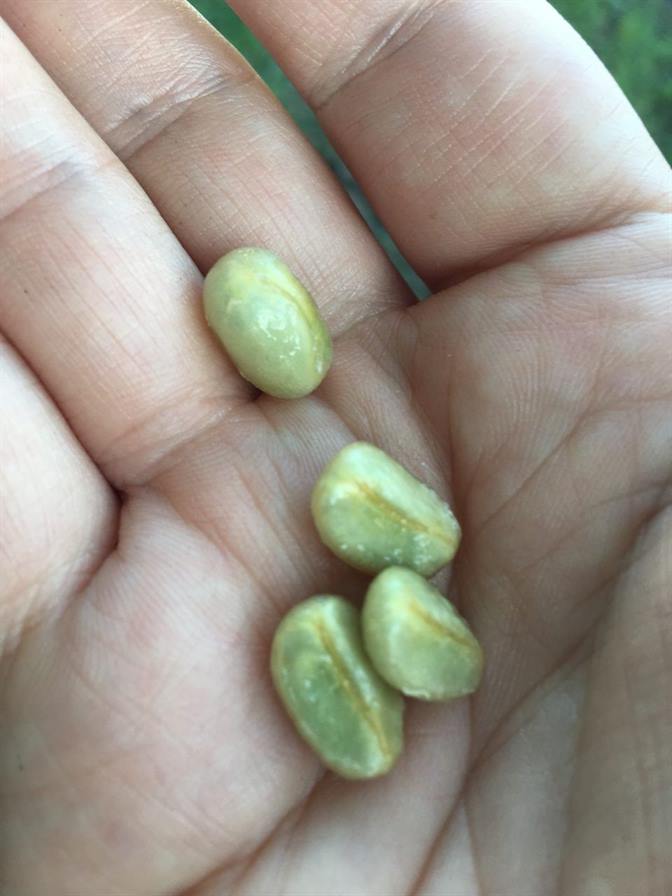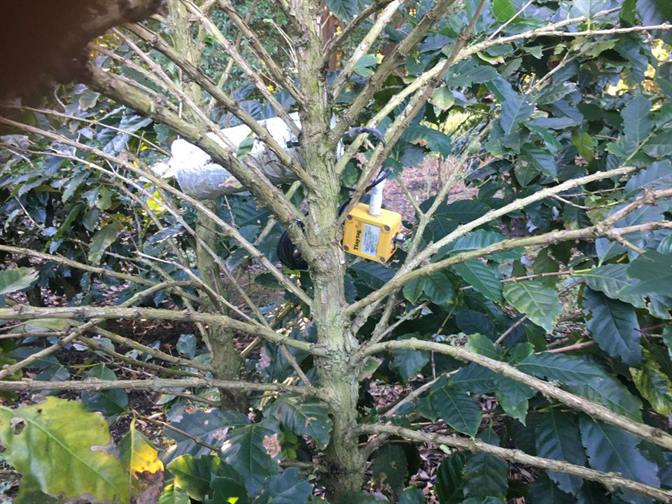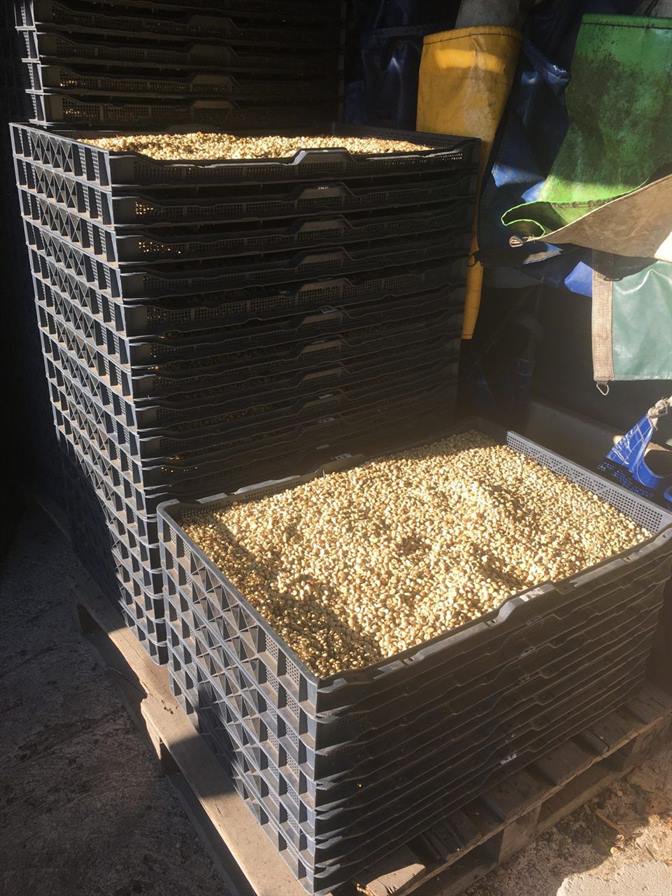Dylan (the son of the owners of Beaver Creek coffee estate) invited me up for a visit. So off I went to experience this local coffee farm, that has started becoming well known.

Farm
On arriving on the farm we had a quick bite to eat. Afterwards we first saw the seedlings (which they grow covered in coffee hessian sacks) and then nursery. This was followed a walk around the farm looking at the different varieties or what Dylan tells me are cultivars on the farm. The farm is a majority SL 28 but there is also Catuai F6 and Catimor. The oldest trees are SL28.
The Beaver Creek coffee farm (or estate as they call it) was started by Dylan’s Dad in the 80s. Initially his grandparents ran the farm, then his mum and dad got involved. He actually grew up on the farm. He has been involved with coffee from early on and has done a variety of different projects within the South African coffee industry. Of interest was the fact that he visited the Specialty Coffee Association of America’s exhibition in 2005.
While Dylan has dabbled in different parts of the coffee industry his passion project is the farm.
Each area of the farm is picked individually and then a lot is created. At the moment they are getting 1 kg of parchment to 6 kilogram of cherry. This seems to be very high ratio.
They currently pic 30 times, typically they start around March and finish in September. The workers are seasonal and the total farm is 14 hectors. They do checks on the trees and treat each part of the farm separately for fungus, insects and soil issues.

Ongoing experiments
Walking through the farm, there are various experiments going on. Temperature monitoring, planting in east – west rows and north-south rows. They are working with Alessandro from Science of coffee on a long term project to understand the different effects of environment their coffee trees are growing. Alessandro has placed temperature sensors on the trees and so far no results have been published.

Temperature zones
Dylan explained that the high altitude requirement for quality coffee is not a true reflection on the reality. For each degree of latitude away from the equator you go, the average temperature drops at around 0.6 ° C. This means that at the farms latitude of 31°S, the average temperature is 18.6 °lower, than at the equator. Then for every 100m above sea level the average temperature drops by around 0.5°C.
Coffee prefers temperatures of between 18 °C and 22 °C to produce sweet fruit. At the latitude of 31°S and a height of over 200m above sea level on the south coast of South Africa (that has a higher temperature than then west coast thanks to the warm Mozambique current) the farm is well located to have this temperature range for most of the growing season.
Dylan will send me a bit more detail of this, and we will publish.
Processing is done on the farm
On the farm they have a pulper, drying tables, mechanical dryers and a huller. At the moment they don’t have a moisture meter so they remove the beans when they believe they are dry (this is about to change).
Typically, once the coffee is de-pulped it’s spends three weeks on the drying table. Initially when the coffee is removed from the fermentation tanks it is air cooled inside, before being placed on the raised beds.
Of interest is that they use these plastic drying trays, these come from the fruit drying industry. It makes it easy to remove the drying coffees from the table, and replace it. I was relatively impressed with this innovation and I’ve never seen it before.

Training centre and sample roasting
In the coffee tasting area they have a training centre. Dylan appears to be very passionate about educating and sharing the skills of a barista and would be interesting to see how their barista course stacks up.
Dylan and I spoke about the complications around extraction and coffee and discussed the brew ratios. Strength = extraction * brew ratio. Extraction is the amount of coffee that becomes soluble.
While there, we sample roasted some of the lots, and also did some roasting experiments. It is always great to cup coffees and we had some good results with their coffees. Their SL28 has traditional SL28 flavours and aromas, and typical mouthfeel.
Limited amount
Their production between about 500kg to 2 tons per hectare depending on age of the trees. The total is relatively small, so they more or less use it all themselves. We are trying to secure a small amount from them on a lot basis and hope to offer this coffee soon.
They also roast coffee and offer a range of coffees not just their own. You can see a full range of their coffees on their website.
Personal take
Personally, I’m relatively impressed that this little coffee farm and that it exists in a pretty obscure part of South Africa. And the good news is that they seem to be doing very well. The family obviously work well as a team and this has resulted in growing success. Anyone in coffee, or who loves coffee in South Africa, should be making an effort to come visit this farm. A lot of what I’ve seen in a different origin trips, the base experience can be experienced right here in South Africa.
More info
For those that want to visit the farm there is an attractive little restaurant a coffee area, a nice shop and a little lake you can rest next too. They only charge R55 a person at the moment for a 30-45 minute tour. This includes the tour of the coffee farm that ends up in the tasting room, where you can taste some of their coffees.
There is a hiking and cycling route that goes through the farm.
I stayed at the wonderful Villa Doré BnB and Hotel, which I highly recommend, for the food and the accommodation.



